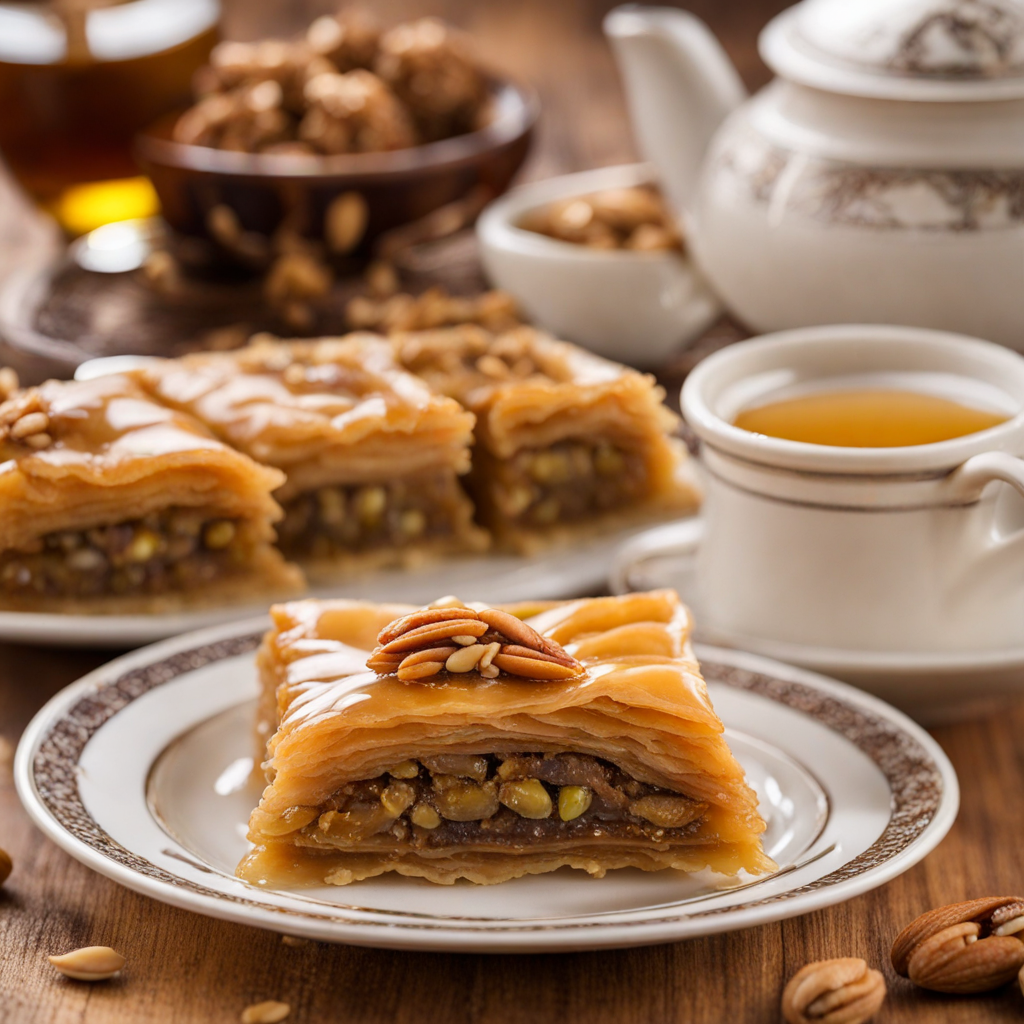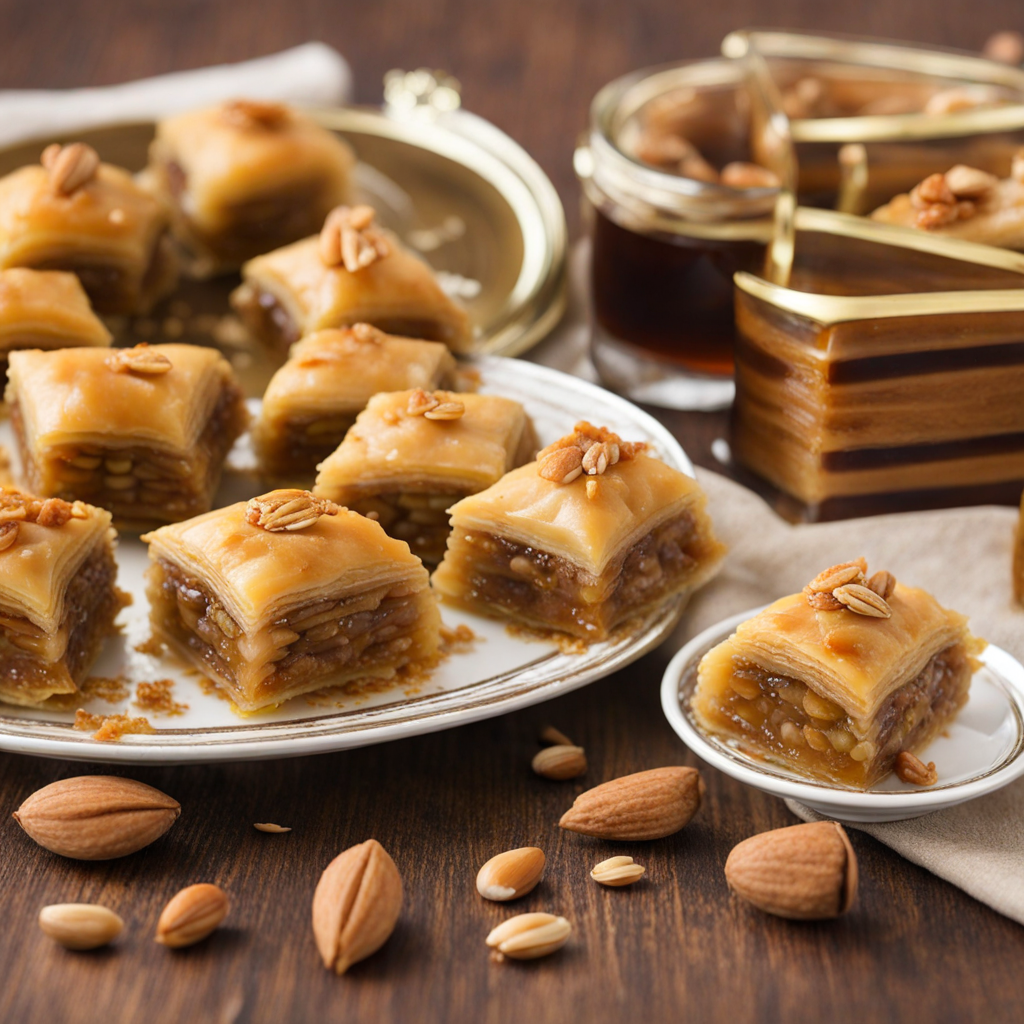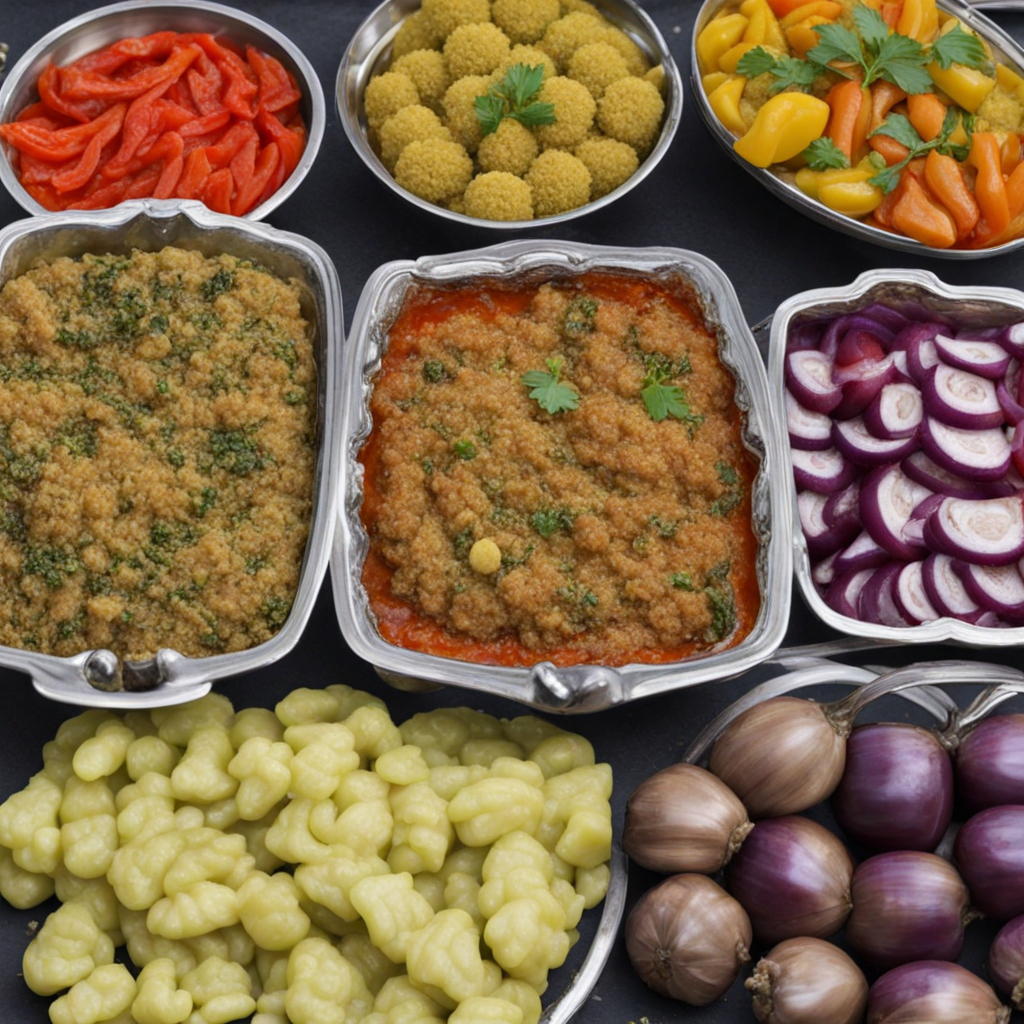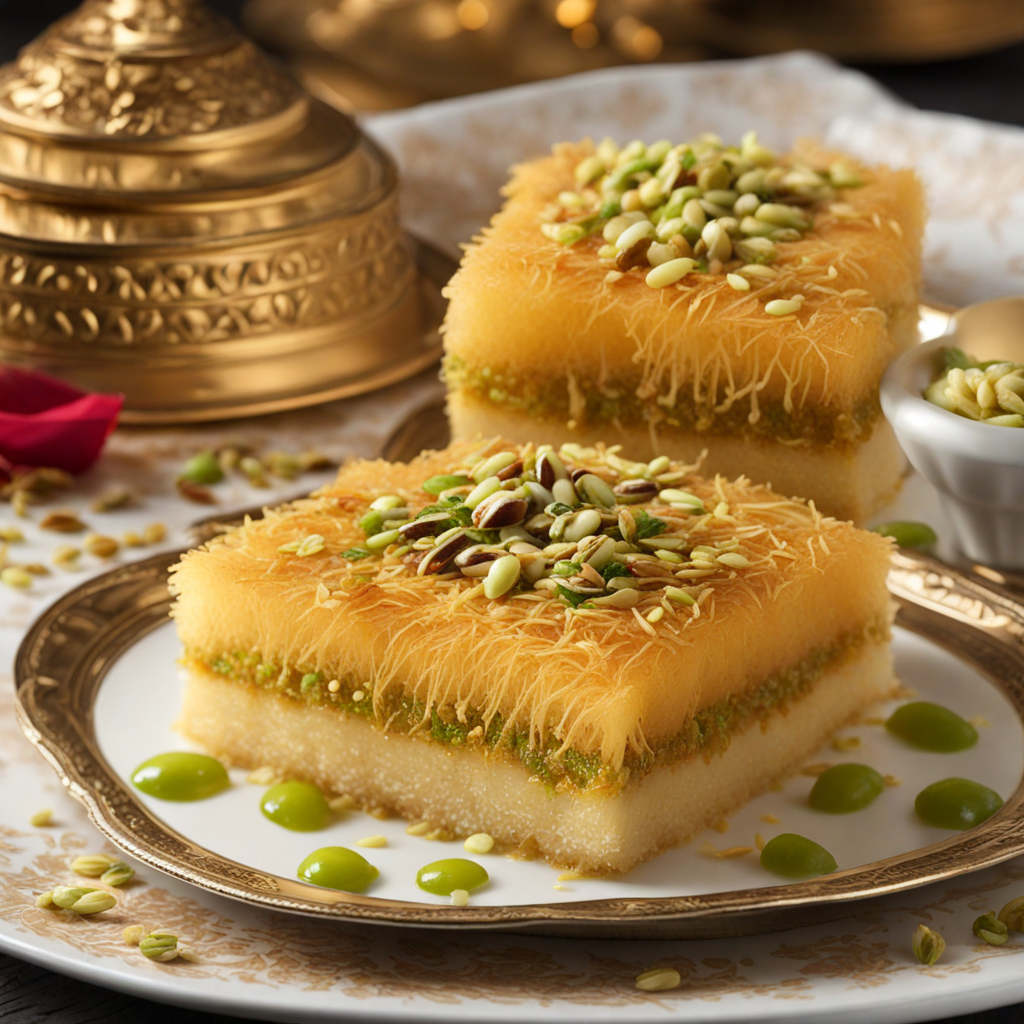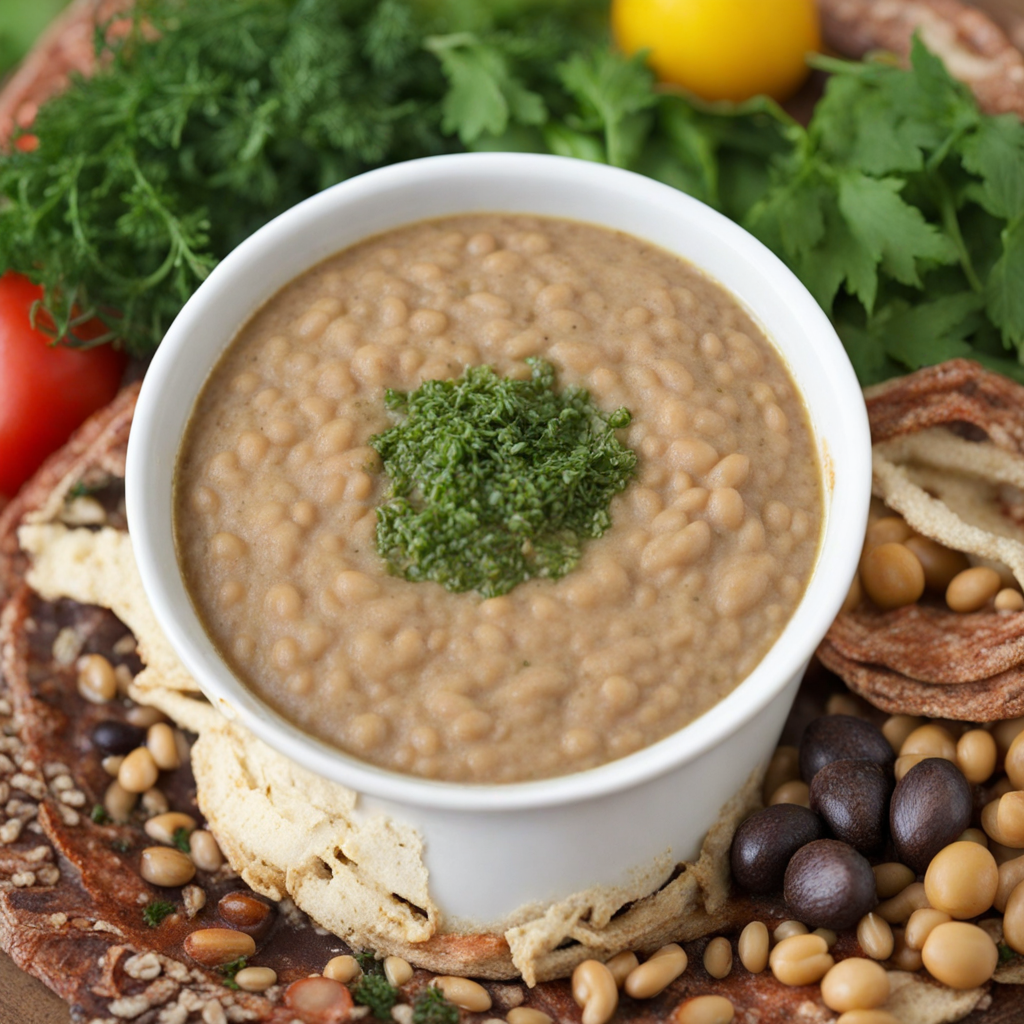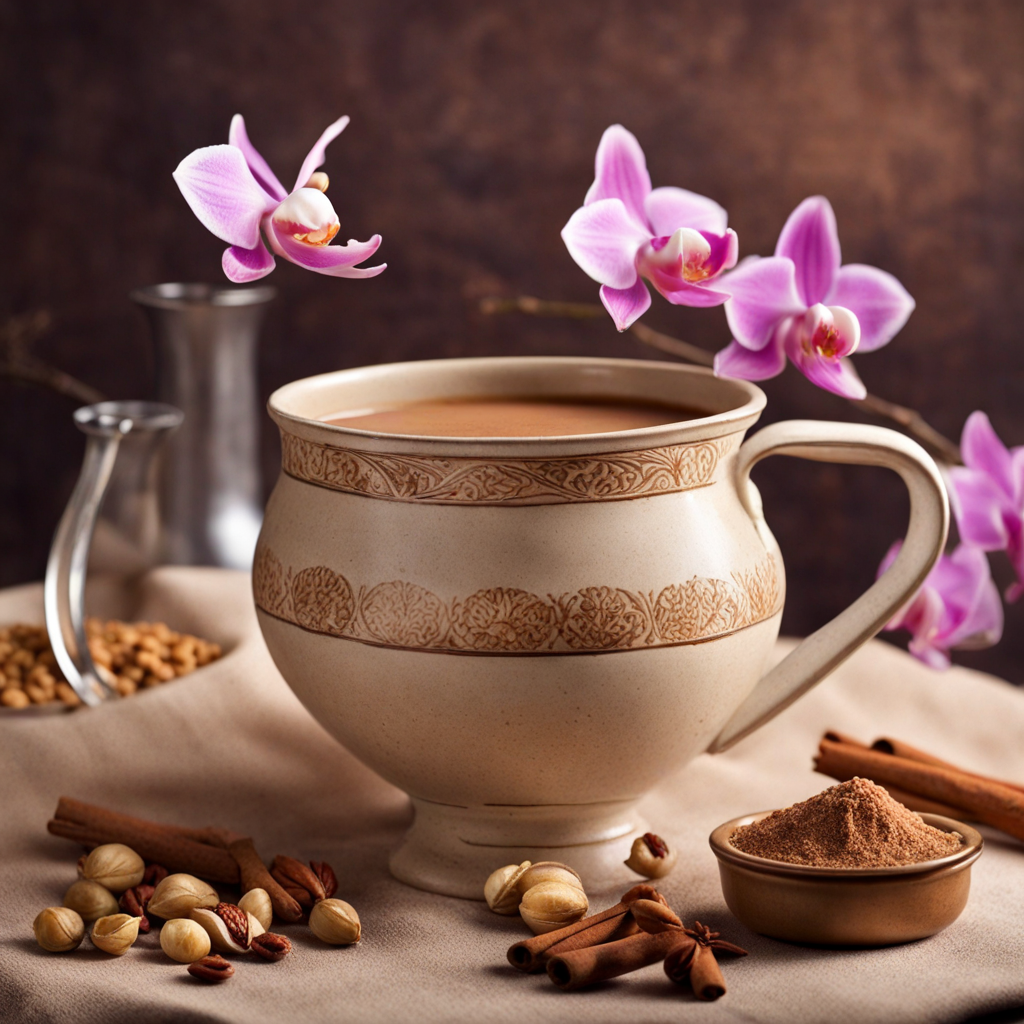Baklava
Baklava, a delightful pastry that hails from the Middle East, has found a special place in Egyptian cuisine, captivating the taste buds of many with its rich and indulgent flavors. This sweet treat is made from layers of thin, flaky pastry known as phyllo dough, which is meticulously brushed with melted butter and stacked to create a delicate, crispy texture. The heart of baklava is its filling, typically composed of finely chopped nuts, such as walnuts, pistachios, or almonds, mixed with sugar and fragrant spices like cinnamon or cardamom. The combination of the crunchy nuts and the crispy layers makes each bite a harmonious experience that’s both satisfying and tantalizing. Once assembled and baked, baklava is generously drenched in a syrup made from a blend of sugar, water, and lemon juice, sometimes infused with rose or orange blossom water for an aromatic touch. This syrup seeps into the pastry, enhancing its sweetness while keeping it moist and decadent. The contrast between the crunchy exterior and the lush syrup-soaked interior creates a delightful texture that is simply irresistible. Each piece is often cut into diamond or square shapes, making it easy to share or enjoy as a personal indulgence. In Egypt, baklava is not just a dessert but a beloved symbol of hospitality and celebration, often served during festive occasions and gatherings. It embodies the essence of Egyptian culinary traditions, where the fusion of flavors and textures is celebrated. The experience of enjoying baklava is made even more special when paired with a cup of strong Egyptian coffee or mint tea, enhancing the overall sensory experience. Whether you are discovering this treat for the first time or revisiting a favorite, baklava promises a taste journey that is rich in history and flavor.
How It Became This Dish
The History of Baklava: A Sweet Legacy from Egypt Baklava, known as بقلاوة in Arabic, is a rich, sweet pastry made of layers of filo dough, filled with chopped nuts and sweetened with honey or syrup. While its origins are often debated, the legacy of this delightful treat is deeply rooted in the cultural and culinary landscapes of the Middle East and the Mediterranean, with Egypt playing a pivotal role in its history. #### Origins: A Culinary Mosaic The exact origins of baklava are shrouded in mystery, with various claims from different cultures regarding its invention. Some historians trace its roots back to the ancient Assyrians, who used layers of dough and nuts in their cooking as early as the 8th century BCE. Others suggest that the Greeks or the Romans were responsible for its creation, as they had similar layered pastries. However, the most compelling narrative ties baklava to the Ottoman Empire, which spread the dessert throughout its vast territories, including Egypt. The Ottomans, known for their sophisticated culinary arts, refined the recipe and popularized baklava as a signature sweet treat across the empire. The introduction of filo dough, which is crucial to the pastry's texture, is believed to have been perfected during this period, possibly inspired by the ancient Greeks’ use of thin pastry. #### Cultural Significance in Egypt In Egypt, baklava has transcended its role as mere food, becoming a symbol of hospitality, celebration, and cultural identity. This sweet delicacy is often served during significant occasions, such as weddings, religious holidays, and family gatherings. Its preparation is considered an art form, showcasing the skill and creativity of the cook. The communal aspect of making baklava brings families together, as recipes are often passed down through generations. Each family may have its unique twist on the traditional recipe, whether through the choice of nuts (commonly walnuts or pistachios), the type of syrup used, or additional flavorings like rosewater or orange blossom water. During Ramadan, a month of fasting for Muslims, baklava is a favored treat to break the fast. Its rich sweetness provides a satisfying end to the day's fasting, making it a staple on iftar tables across the country. The pastry is also enjoyed during Eid celebrations, where it symbolizes joy and togetherness. #### Development Over Time As Egypt modernized throughout the 19th and 20th centuries, baklava evolved alongside it. The rise of the middle class and changes in social customs allowed for new interpretations and variations of the dish. Cairo became a melting pot of culinary influences, and baklava adapted to include local ingredients and tastes. In the 19th century, as Egypt became more integrated into global trade networks, the availability of new ingredients influenced baklava recipes. For example, the introduction of chocolate led to chocolate baklava, which became popular among younger generations. Additionally, the influence of other cultures resulted in the incorporation of spices such as cinnamon and nutmeg, adding depth to the traditional flavors. The 20th century saw the proliferation of bakeries specializing in traditional sweets. These establishments became cultural landmarks in cities like Cairo and Alexandria, where baklava was produced in large quantities and offered in various styles. The dessert’s popularity soared, leading to the creation of new variations, including mini baklava bites and alternative fillings such as dates and figs. #### Globalization and Modern Popularity As migration patterns changed and globalization took hold, baklava began to find its way into cuisines around the world. Today, it is enjoyed in various forms, from upscale restaurants to street vendors, both in Egypt and beyond. The diaspora of Middle Eastern and Mediterranean communities has helped to popularize baklava in countries such as the United States, Canada, and parts of Europe, where the dessert has been embraced and adapted. In contemporary culinary spaces, baklava has been reimagined in innovative ways. Chefs experiment with flavors, layering techniques, and even presentation styles, creating modern interpretations that appeal to a broader audience while maintaining the essence of the original dish. Vegan and gluten-free versions have also emerged, reflecting changing dietary preferences without sacrificing the pastry's beloved flavor and texture. #### Conclusion: A Timeless Treasure Baklava stands as a testament to the rich tapestry of culinary history that stretches across cultures and centuries. From its ancient beginnings to its modern adaptations, the sweet pastry continues to evoke a sense of nostalgia and celebration in Egypt and beyond. Each bite of baklava carries with it stories of community, tradition, and the shared joy of food. As we savor this delectable dessert, we are reminded of the intricate connections between food and culture, how recipes evolve while still honoring their roots, and the ways in which a simple pastry can encapsulate the essence of a people’s identity. Whether enjoyed at a family gathering, a festive celebration, or a quiet moment of indulgence, baklava remains a cherished symbol of sweetness that transcends time and place.
You may like
Discover local flavors from Egypt


